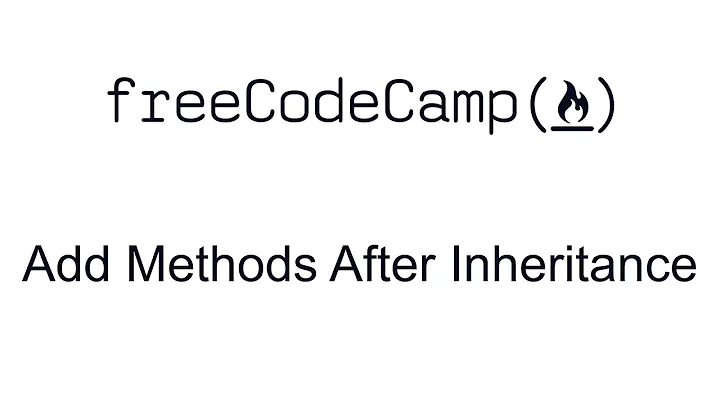How to add documentation tooltip to classes, methods, properties, etc. in C#?
Solution 1
You can use /// or GhostDoc
Edit:
In first case you'll get
/// <summary>
///
/// </summary>
class A
{
/// <summary>
///
/// </summary>
public A() { }
/// <summary>
///
/// </summary>
public int Property { get; set; }
/// <summary>
///
/// </summary>
/// <param name="obj"></param>
public void Method(object obj) { }
}
In second
/// <summary>
///
/// </summary>
class B
{
/// <summary>
/// Initializes a new instance of the <see cref="B"/> class.
/// </summary>
public B() { }
/// <summary>
/// Gets or sets the property.
/// </summary>
/// <value>
/// The property.
/// </value>
public int Property { get; set; }
/// <summary>
/// Methods the specified obj.
/// </summary>
/// <param name="obj">The obj.</param>
public void Method(object obj) { }
}
Solution 2
Just above your class, method or property, type /// then press return. This will generate the documentation template for you.
Forgot to answer the other part of your question: this is known as XML Documentation Comments and there is a substantial amount of information about this in MSDN.
Solution 3
What you are referring to is called XML documentation or XML-doc.
XML-doc is performed on a class, field, property, event or method using three forward-slashes (///), followed by XML-formatted meta-information about the class or its member.
VS will help you generate and format these comments with built-in IntelliSense support for XML comments, but there is a free tool called GhostDoc that will automatically generate the full XML-doc template, and it's even "smart" enough in some cases to try to guess a basic description for various elements of the documentation.
Here's a basic example of XML documentation:
/// <summary>
/// Defines the behavior of a class following the Repository pattern for data access
/// with basic atomic operation control.
/// </summary>
/// <typeparam name="TRest">An interface derived from IDomainObject that describes domain objects
/// that can be retrieved or saved by this Repository.</typeparam>
public interface IRepository<TRest> : IDisposable where TRest : IDomainObject
{
/// <summary>
/// Begins a new unit of work to be performed atomically by the Repository.
/// </summary>
/// <returns>A token class representing the unit of work.</returns>
IUnitOfWork BeginUnitOfWork();
/// <summary>
/// Commits all work performed under the specified unit of work.
/// </summary>
/// <param name="unitOfWork">The unit of work.</param>
void CommitUnitOfWork(IUnitOfWork unitOfWork);
/// <summary>
/// Rolls back the specified unit of work.
/// </summary>
/// <param name="unitOfWork">The unit of work.</param>
void RollBackUnitOfWork(IUnitOfWork unitOfWork);
/// <summary>
/// Saves the specified domain object to the data source controlled by the repository.
/// </summary>
/// <typeparam name="T"></typeparam>
/// <param name="domainObject">The domain object.</param>
/// <param name="unitOfWork">The unit of work.</param>
void Save<T>(T domainObject, IUnitOfWork unitOfWork) where T : class, TRest;
/// <summary>
/// Begins a Linq query for a specific object type, to be performed against the Repository's data source.
/// </summary>
/// <typeparam name="T"></typeparam>
/// <param name="unitOfWork">The unit of work.</param>
/// <returns>An IQueryable representing the query to be performed.</returns>
IQueryable<T> QueryFor<T>(IUnitOfWork unitOfWork) where T : class, TRest;
/// <summary>
/// Performs the specified Action using a new unit of work, with commits and rollbacks as necessary.
/// </summary>
/// <typeparam name="T"></typeparam>
/// <param name="func">The Action to perform. The lambda or named method must accept an IUnitOfWork as a parameter.</param>
/// <param name="commit">if set to <c>true</c>, commit the unit of work.</param>
void PerformInNewUnitOfWork<T>(Action<IUnitOfWork> func, bool commit = false);
/// <summary>
/// Performs the specified Func using a new unit of work, with commits and rollbacks as necessary.
/// </summary>
/// <typeparam name="T"></typeparam>
/// <param name="func">The function to evaluate. The lambda or named method must accept an IUnitOfWork as a parameter.</param>
/// <returns>A single object of the generic type, returned by the function.</returns>
/// <param name="commit">if set to <c>true</c>, commit the unit of work.</param>
T PerformInNewUnitOfWork<T>(Func<IUnitOfWork, T> func, bool commit = false) where T : class, TRest;
/// <summary>
/// Performs the specified Func using a new unit of work, with commits and rollbacks as necessary.
/// </summary>
/// <typeparam name="T"></typeparam>
/// <param name="func">The Function to evaluate. The lambda or named method must accept an IUnitOfWork as a parameter.</param>
/// <returns>An enumerable set of objects of the generic type, returned by the function.</returns>
/// <param name="commit">if set to <c>true</c>, commit the unit of work.</param>
IEnumerable<T> PerformInNewUnitOfWork<T>(Func<IUnitOfWork, IEnumerable<T>> func, bool commit = false) where T : class, TRest;
/// <summary>
/// Attaches the specified domain object to the current Unit of Work, allowing operations to be performed on it.
/// </summary>
/// <typeparam name="T"></typeparam>
/// <param name="domainObject">The domain object.</param>
/// <param name="unitOfWork">The unit of work.</param>
void Attach<T>(T domainObject, IUnitOfWork unitOfWork) where T : class, TRest;
/// <summary>
/// Detaches the specified domain object to the current Unit of Work.
/// </summary>
/// <typeparam name="T"></typeparam>
/// <param name="domainObject">The domain object.</param>
/// <param name="unitOfWork">The unit of work.</param>
void Detach<T>(T domainObject, IUnitOfWork unitOfWork) where T : class, TRest;
/// <summary>
/// Refreshes the specified collection of persistent elements with the most recent persisted data.
/// </summary>
/// <typeparam name="T"></typeparam>
/// <param name="elements">The list of elements to refresh.</param>
/// <param name="unitOfWork">The Unit of Work under which to perform the operation.</param>
void Refresh<T>(IList<T> elements, IUnitOfWork unitOfWork) where T : class, TRest;
/// <summary>
/// Deletes the specified domain object from the data store.
/// Usually performs a physical delete; logical deletes are most often done through updates.
/// </summary>
/// <typeparam name="T"></typeparam>
/// <param name="domainObject">The domain object to delete.</param>
/// <param name="unitOfWork">The unit of work under which to perform the operation.</param>
void Delete<T>(T domainObject, IUnitOfWork unitOfWork) where T : class, TRest;
}
Related videos on Youtube
Edward
Voxel Blog: https://www.megavoxels.com C# Developer Unity Developer iOS, Android and Windows
Updated on July 09, 2022Comments
-
Edward almost 2 years
Not sure if I'm even calling this right but I wanted to start adding some documentation to my classes, methods, properties, etc. I know this is probably super obvious but I never really learned it. I'm not sure where to start.
Just to clarify whenever you roll over a class (or method, property, etc.) it shows a tooltip in Visual Studio with some documentation on that specific method.
class Microsoft.Phone.BackgroundAudio.BackgroundAudioPlayer
Provides background access to audio playback functionality such as play, pause, fast-forward, and rewind.What is that called and how can I implement this in my C# application?
-
 David over 12 yearsJust remember that it doesn't automatically update the comments if you change the method/class/property/etc. API docs are definitely useful, but understand that it creates another manual step when making changes.
David over 12 yearsJust remember that it doesn't automatically update the comments if you change the method/class/property/etc. API docs are definitely useful, but understand that it creates another manual step when making changes. -
Edward over 12 years@competent_tech I knew it had to be something simple. I never knew what that was for haha. Many thanks.
-
Edward over 12 years@Shymep GhostDoc looks awesome. I will have to try it out for sure.
-
Martin KS over 5 yearsThis question is also a top google hit if you're looking for the same information for VB.NET - so it might be useful to future visitors to know that all you need to do is replace
///with'''to translate between the two - and if you type it by hand visual studio will auto-complete useful fields for you to fill in.








